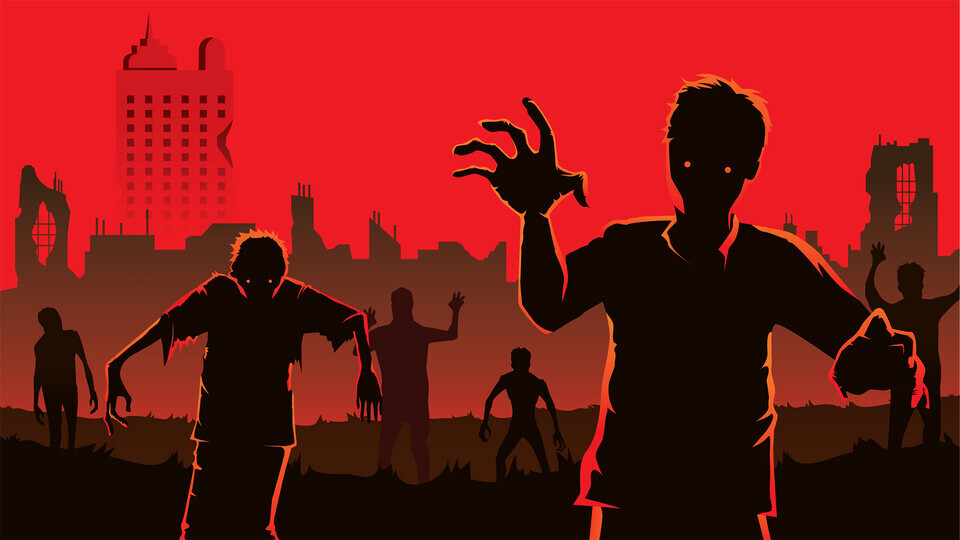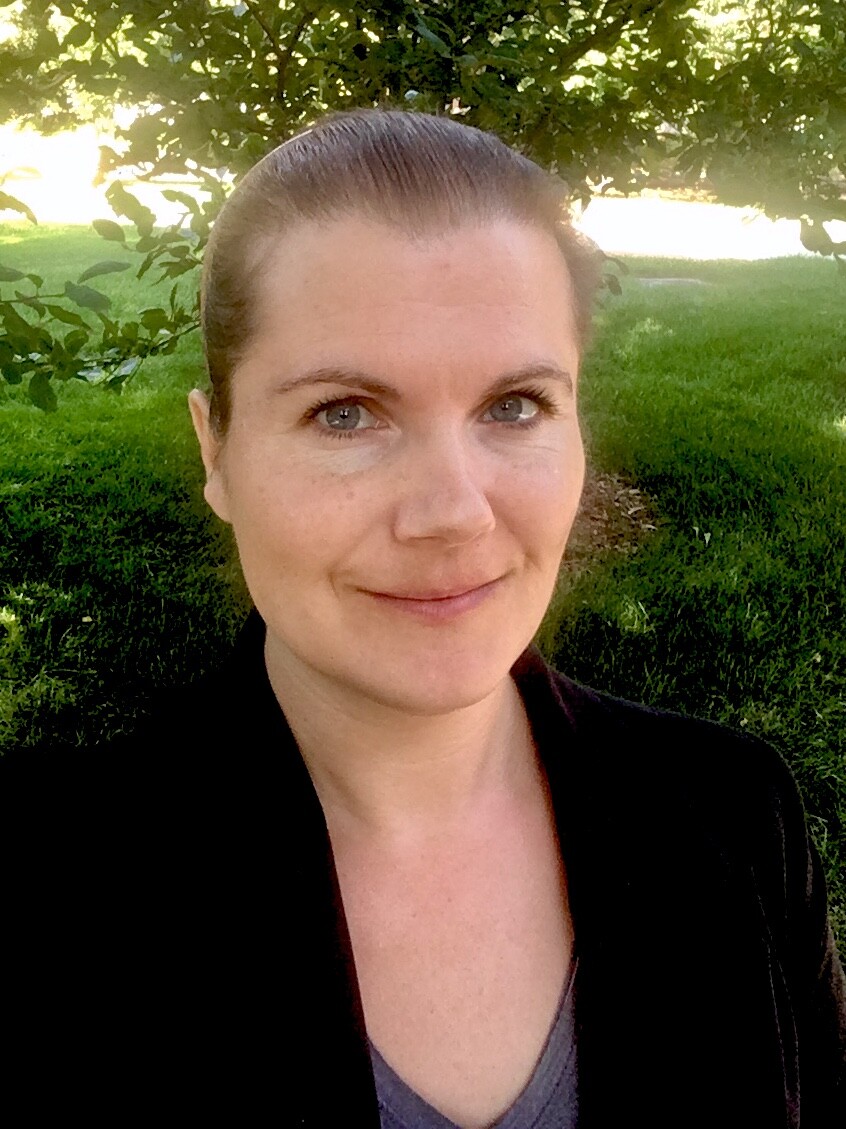
Blood, bones and brains — oh my! The core elements of Halloween gore are typically avoided during other seasons. So why do people love to be scared this time of year?
Jacquelyn Omelian, assistant professor of practice in psychology, sat down with Nebraska Today’s Kateri Hartman to discuss — from the neuroscience perspective — why our brains seek out witchy scares during the spooky season and beyond. Omelian earned a doctorate in neuroscience and behavior from the University of Nebraska at Omaha. Now in her third year at the University of Nebraska–Lincoln, Omelian is fascinated by the brain, education and learning, and incorporates that into her research and coursework. She consistently provides students with experiential learning opportunities, and most recently hosted the second annual “Movies with Brains,” a movie series in which zombie-related movies such as “World War Z” and “Zombieland” are captioned with brain-related facts by students in her neuroscience of zombies course.
Why do people intentionally seek out scares, from a psychological perspective?

There are a couple of different theories. One of them has to do with the novelty of being in something like a haunted house or watching a scary movie, it’s something new that we don’t experience in our daily lives. It also helps us bond with other people, so it makes a great social event or date because getting to experience something new with someone helps us bond with them. There is also a neurobiological piece. Being afraid evokes a very strong physiological response in us where we get this adrenaline rush and stress response. Then when things work out and we’re fine, we get this rush of dopamine which is very rewarding and feels good. It’s both that sense of danger and then the relief of being okay. When we’re doing it with a scary movie or a haunted house, we know at some level that we’re not really in danger so there’s that safety net. While some people are bungee jumping and skydiving, a haunted house is sort of a safer version of getting that same physiological response.
Can our brains differentiate between actual threats and perceived threats in these situations?
Yes and no. For our initial response, if someone jumps out at you, it doesn’t matter if that person is a paid actor or a potential threat. We’re not distinguishing that in the moment. However, we are choosing to put ourselves in a situation where we cognitively know that we’re not actually going to get injured. We’re not necessarily controlling our response, but we’re controlling the degree of risk that we’re taking to get that response that invokes the adrenaline rush.
What is the difference in our fear response when we’re in controlled situations versus a real threat?
Context is really important when we’re looking at psychological and physiological responses. So in a case where you’re in actual danger that context is going to skew all of the emotions that you feel after the event as well. Whereas in something like a haunted house, your emotional state after you receive the scare is likely very positive. You’re laughing with friends. you’re joking, it’s relief, rather than having any sort of lingering or potential fear effects so it’s more akin to something like skydiving, than it is an actual unexpected dangerous situation. It’s really that difference of seeking out that fear response versus it being forced upon you.
How much do external factors such as lighting and smoke screens contribute to our body’s response in fear-inducing situations?
We are conditioned, and we’ve learned our potential dangers and fear responses. We also have innate fears like spiders or snakes that people tend to be more naturally afraid of. People who create these experiences, be it movies or haunted houses, are very good at tapping into those. A creepy soundtrack can completely change the tone of a scene in a movie because even when we’re not necessarily consciously attending to it we’re taking in that entire experience. When we’re afraid we’re very alert, we pay a lot of attention. So all of those little things together are actually making a combined larger impact on our experience.
What is it about costume masks that invoke such a strong reaction in people?
Humans are super social animals. We have entire brain areas dedicated to reading faces and emotions and we spend a ton of our time from a very early age, looking at faces and paying attention to the eyes and mouth and using that as social communication so when you have something that is face-shaped but is not responding the way that we expect a face to respond, that is very unsettling, and it sets off a lot of alarm bells.
From a neuroscience perspective, are adrenaline and dopamine the key reasons that people continue to pursue these kinds of entertainment year after year?
From my perspective as a neuroscientist, I’m always going to say that it’s the brain that’s driving that behavior, but I think it is a piece of a larger puzzle. You also have this contextual piece where it is a more popular holiday so there are more opportunities to do these sorts of things, and when we look at how prevalent certain things are in the media, for example, The Walking Dead was popular, that drives some of that interest as well. I think when we look at why some people like scary movies and some people don’t, that’s where we see more of that variation. We all have a fear response and the dopamine release, but how much we like that and how much we choose fear to be the instigating mechanism for that varies quite a bit. There is research that argues that thrill-seeking has a personality component. It may have to do with learned response. So did you grow up, getting fun scares, or was fear or a fear response more of a negative experience? I think there are a lot of potential explanations and I don’t know that we really have a good, solid grasp of why some people like certain things more than others.
Is there an evolutionary explanation for why our brains might seek out these experiences?
It’s likely seeking out that neurobiological response, that adrenaline rush and dopamine release. There’s some evidence that oxytocin is also playing a role there. So, increased social interaction or increased social response. There is some evidence suggesting that not only is there a difference in the way that we seek out fear but there are also differences in the way that we respond to fear. So that sort of traditional fight or flight is probably too simple. Dr. Shelly Taylor’s theory of tend and befriend suggests that some people may use fear as a mechanism to build social interactions or use social interactions to cope with fear, more so than the more aggressive stances that we traditionally studied, so there’s likely more variation than we’re currently aware of.
Could desensitization play a role here? If people are desensitized, are they seeking out creepier experiences each year?
We certainly see some level of desensitization to things whether you’re talking graphic violence, or even about the jump scares. If you went through a haunted house a bunch of times, eventually that would stop being as relevant and we can certainly become desensitized to those fear responses. The inverse of that is where that system gets maladaptively used and we start to be fearful of things that we shouldn’t be afraid of or that aren’t necessarily threatening and that’s where we see things like PTSD. It’s a fairly sensitive system and it is very adaptable in terms of how we learn and how we maintain those fear responses over time.
Can you speak on the widespread participation that comes with Halloween or even other popular holidays?
There are two underlying or potential explanations there. One is the interest in the supernatural spooky part of the holiday, and that’s something that we see across cultures that is not Halloween specific, we see stories of the supernatural and things like vampires and zombies cross-culturally for generations, and that’s been used partially as a way to teach a culture’s fears and values, especially to children because fear is a very motivating lesson. When we look at the progression of Halloween as a holiday, I think it’s something that has come about for a couple of reasons. If we look at media representations, it was really popular in the 90s and early 2000s. You had shows like The Simpsons and the Treehouse of Horror, then more recently you have shows like Brooklyn Nine-Nine that did a Halloween special, so I think we start to see it there in the media and that probably explains some of its spread to other countries as well. Then we have the commercial aspect of it too, Spirit Halloween stores pop up, and it’s almost unavoidable. I think it has really grown culturally for some of those reasons, even in the past 20, 30 years or so, and which aspects of it will continue to grow and be popularized is something that remains to be seen.







